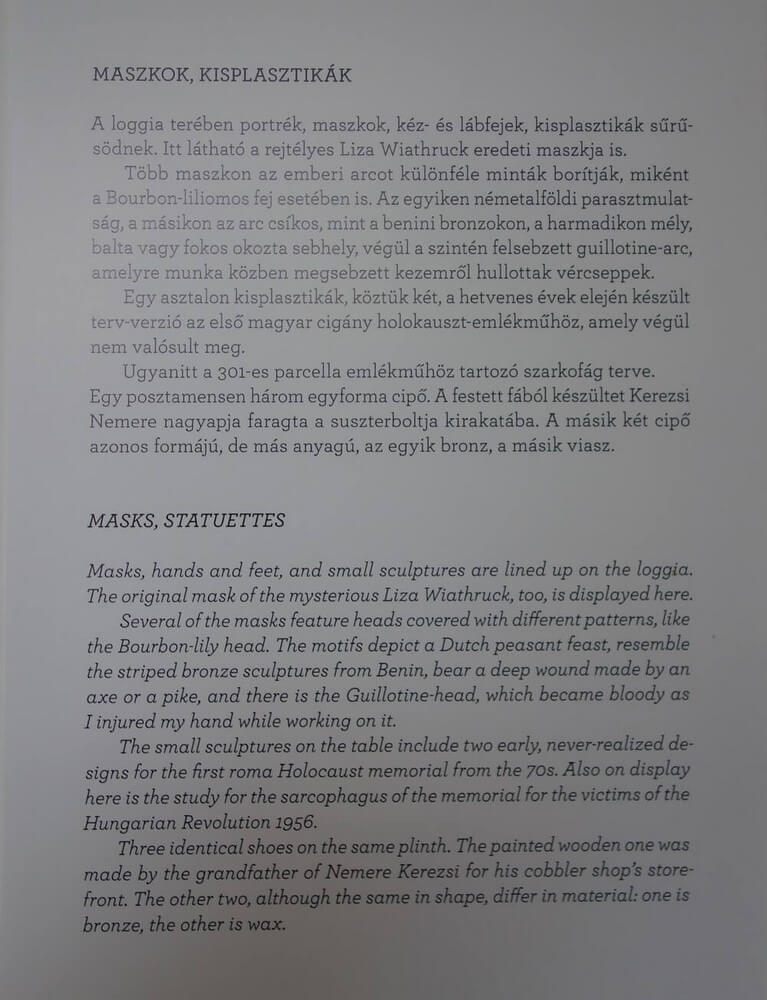MASZKOK, KISPLASZTIKAK
Maszkok, kisplasztikák
A loggia terében portrék, maszkok, kéz- és lábfejek, kisplasztikák sűrűsödnek. Itt látható a rejtélyes Liza Wiathruck eredeti maszkja is.
Több maszkon az emberi arcot különféle minták borítják, miként a Bourbon-liliomos fej esetében is. Az egyiken németalföldi parasztmulatság, a másikon az arc csíkos, mint a benini bronzokon, a harmadikon mély, balta vagy fokos okozta sebhely, végül a szintén felsebzett guillotine-arc, amelyre munka közben megsebzett kezemről hullottak vércseppek.
Egy asztalon kisplasztikák, köztük két, a hetvenes évek elején készült terv-verzió az első magyar cigány holokauszt-emlékműhöz, amely végül nem valósult meg.
Ugyanitt a 301-es parcella emlékműhöz tartozó szarkofág terve.
Egy posztamensen három egyforma cipő. A festett fából készültet Kerezsi Nemere nagyapja faragta a suszterboltja kirakatába. A másik két cipő azonos formájú, de más anyagú, az egyik bronz, a másik viasz.
Masks, statuettes
Masks, hands and feet, and small sculptures are lined up on the loggia. The original mask of the mysterious Liza Wiathruck, too, is displayed here.
Several of the masks feature heads covered with different patterns, like the Bourbon-lily head. The motifs depict a Dutch peasant feast, resemble the striped bronze sculptures from Benin, bear a deep wound made by an axe or a pike, and there is the Guillotine-head, which became bloody as I injured my hand while working on it.
The small sculptures on the table include two early, never-realized designs for the first roma Holocaust memorial from the 70s. Also on display here is the study for the sarcophagus of the memorial for the victims of the Hungarian Revolution 1956.
Three identical shoes on the same plinth. The painted wooden one was made by the grandfather of Nemere Kerezsi for his cobbler shop’s storefront. The other two, although the same in shape, differ in material: one is bronze, the other is wax.
